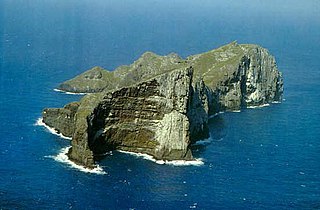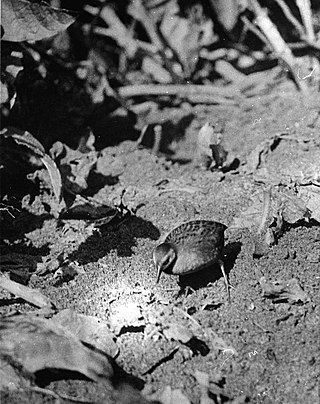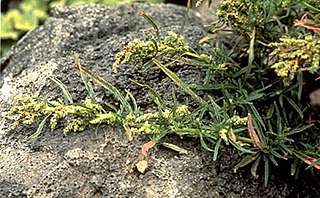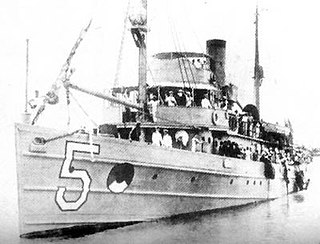
The Laysan duck, also known as the Laysan teal, is a dabbling duck endemic to the Hawaiian Islands. Fossil evidence reveals that Laysan ducks once lived across the entire archipelago, but today survive only on Laysan Island and two atolls. The duck has several physical and behavioral traits linked to the absence of ground-based predators in its habitat. By 1860, the ducks had disappeared from everywhere except Laysan Island. The introduction of European rabbits by guano miners at the end of the 19th century brought the bird to the brink of extinction in 1912, with twelve surviving individuals. Rabbits were eradicated from the island in 1923 and numbers of Laysan ducks began to rise, reaching 500 by the 1950s. In an effort to ensure the long-term future of this duck, 42 birds were translocated to Midway Atoll National Wildlife Refuge in 2002. These thrived in their new surroundings, and another group were later relocated to Kure Atoll.
Located about 2300 miles (3680 km) from the nearest continental shore, the Hawaiian Islands are the most isolated group of islands on the planet. The plant and animal life of the Hawaiian archipelago is the result of early, very infrequent colonizations of arriving species and the slow evolution of those species—in isolation from the rest of the world's flora and fauna—over a period of at least 5 million years. As a consequence, Hawai'i is home to a large number of endemic species. The radiation of species described by Charles Darwin in the Galapagos Islands which was critical to the formulation of his theory of evolution is far exceeded in the more isolated Hawaiian Islands.

Nihoa, also known as Bird Island or Moku Manu, is the tallest of ten islands and atolls in the uninhabited Northwestern Hawaiian Islands (NWHI). The island is located at the southern end of the NWHI chain, 296 km (160 nmi) southeast of Necker Island. Nihoa is the closest NWHI in proximity to the eight main windward Hawaiian Islands at approximately 240 km (130 nmi) northwest of the island of Kauaʻi. The island has two peaks, 272 m (892 ft) Miller's Peak in the west, and 259 m (850 ft) Tanager Peak in the east. Nihoa's area is about 171 acres (0.69 km2) and is surrounded by a 142,000-acre (57,000 ha) coral reef. Its jagged outline gives the island its name, Nīhoa, which is Hawaiian for "tooth".

The Northwestern Hawaiian Islands or Leeward Hawaiian Islands are a series of islands and atolls in the Hawaiian island chain located northwest of the islands of Kauai and Niihau. Politically, they are all part of Honolulu County in the U.S. state of Hawaii, except Midway Atoll, which is a territory distinct from the State of Hawaii, and grouped as one of the United States Minor Outlying Islands. The United States Census Bureau defines this area, except Midway, as Census Tract 114.98 of Honolulu County. Its total land area is 3.1075 square miles (8.048 km2). All the islands except Nihoa are north of the Tropic of Cancer, making them the only islands in Hawaii that lie outside the tropics.

The genus Pritchardia consists of between 24 and 40 species of fan palms found on tropical Pacific Ocean islands in Fiji, Samoa, Tonga, Tuamotus, and most diversely in Hawaii. The generic name honors William Thomas Pritchard (1829-1907), a British consul at Fiji.

Laysan, located 808 nautical miles northwest of Honolulu at 25°42′14″N171°44′04″W, is one of the Northwestern Hawaiian Islands. It comprises one land mass of 1,016 acres (4.11 km2), about 1 by 1+1⁄2 miles in size. It is an atoll of sorts, although the land completely surrounds a shallow central lake some 2.4 m (7.9 ft) above sea level that has a salinity approximately three times greater than the ocean. Laysan's Hawaiian name, Kauō, means egg.

The Laysan rail or Laysan crake was a flightless bird endemic to the Northwest Hawaiian Island of Laysan. This small island was and still is an important seabird colony, and sustained a number of endemic species, including the rail. It became extinct due to habitat loss by domestic rabbits, and ultimately World War II.

The Laysan finch is a species of Hawaiian honeycreeper, that is endemic to the Northwestern Hawaiian Islands. It is one of four remaining finch-billed Hawaiian honeycreepers and is closely related to the smaller Nihoa finch. The Laysan finch is named for Laysan, the island to which it was endemic on its discovery. It was subsequently introduced to a few other atolls, and its historical range included some of the main islands.

The Nihoa millerbird is a subspecies of the millerbird. It gets its name from its preferred food, the Miller moth. The 5-inch (13 cm) long millerbird has dark, sepia-colored feathers, white belly, and dark beak. Its natural geographic range is limited to the tiny island of Nihoa in the Northwestern Hawaiian Islands, and it is hoped that birds translocated to Laysan will help to ensure the survival of the species. The Nihoa millerbird is one of the two endemic birds remaining on Nihoa, the other being the Nihoa finch.

Pritchardia remota, the Nihoa pritchardia, Nihoa fan palm, or Loulu, is a species of palm endemic on the island of Nihoa, Hawaiʻi, and later transplanted to the island of Laysan. It is a smaller tree than most other species of Pritchardia, typically reaching only 4–5 metres (13–16 ft) tall and with a trunk diameter of 15 centimetres (5.9 in). It is the only type of tree on the island and used to be abundant. In 1885 a wildfire ravaged the island, destroying most of the palms. Only about 700 of these trees remain, making the species endangered but numbers are slowly increasing. The palm is being cultivated in botanical gardens.

The Laysan millerbird was a subspecies of the millerbird, similar in appearance to the remaining subspecies, the Nihoa millerbird. Its dorsal side was brown, and its belly was grayish. Its name derives from its favorite food, several species of moths of the genus Agrotis commonly referred to as "millers".

The millerbird is a species of Old World warbler in the family Acrocephalidae. It has two subspecies, A. f. kingi and A f. familiaris. The latter, the Laysan millerbird, became extinct sometime between 1916 and 1923. The former, the critically endangered Nihoa millerbird, remains the only race left, inhabiting the small island Nihoa in Hawaiʻi, though it has since been reintroduced to Laysan. It is the only Old World warbler to have colonised Hawaiʻi, although there is no fossil evidence that the species ever had a distribution beyond these two islands.

Amaranthus brownii was an annual herb in the family Amaranthaceae. The plant was found only on the small island of Nihoa in the Northwestern Hawaiian Islands, growing on rocky outcrops at altitudes of 120–215 m (394–705 ft). It was one of nine species of Amaranthus in the Hawaiian Islands, as well as the only endemic Hawaiian species of the genus. It is now considered extinct.

The TanagerExpedition was a series of five biological surveys of the Northwestern Hawaiian Islands conducted in partnership between the Bureau of Biological Survey and the Bishop Museum, with the assistance of the United States Navy. Four expeditions occurred from April to August 1923, and a fifth in July 1924. Led by Lieutenant Commander Samuel Wilder King on the minesweeper USS Tanager (AM-5), and Alexander Wetmore directing the team of scientists, the expedition studied the plant animal life, and geology of the central Pacific islands. Noted members of the team include archaeologist Kenneth Emory and herpetologist Chapman Grant.
Maximilian Joseph August Schlemmer, known as the "King of Laysan," was a German immigrant to the United States who settled in Hawaii and spent fifteen years from 1894 to 1915 living with his family on the Hawaiian island of Laysan as superintendent of a guano mining operation. Schlemmer was interested in the birdlife of the island and made several studies which provide information on historic bird populations. However, Schlemmer and his family unwittingly introduced rabbits to Laysan, leading to the extinction of the Laysan rail and Laysan millerbird and permanently changed the island's ecology in the early 20th century. A biography of Schlemmer was written by his grandson, Tom Unger.
Hugo Hermann Schauinsland was a German zoologist born in Rittergut Dedawe, Kreis Labiau, East Prussia.

Eragrostis variabilis is a species of grass known by the common names variable lovegrass, kawelu, emoloa, and kalamalo. It is endemic to Hawaii, where it occurs on all the main islands plus Kure Atoll, Midway Atoll, Pearl and Hermes Atoll, Lisianski Island, Laysan, and Nihoa.

The Northwestern Hawaii scrub is a tropical and subtropical grasslands, savannas, and shrublands ecoregion on the Northwestern Hawaiian Islands in the Pacific Ocean.














